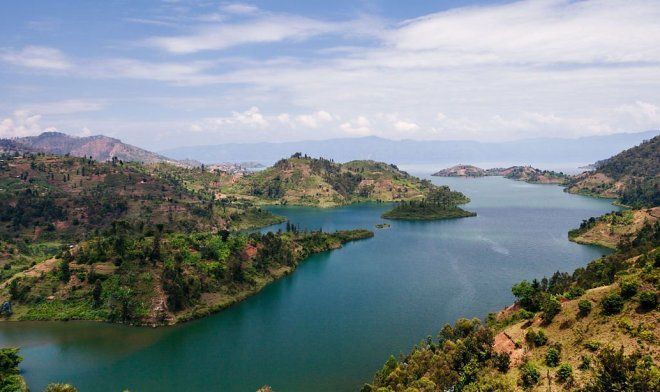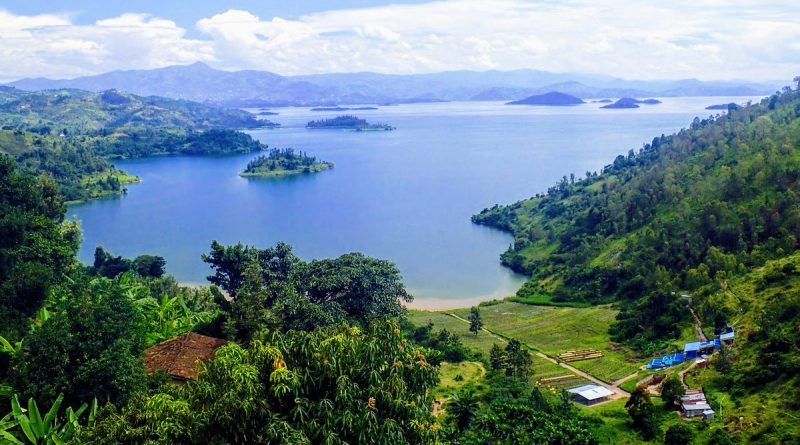Africa’s “Kiva Killer Lake” looks like heaven, but holds a deadly secret
Africa's "Kiva Killer Lake" looks like heaven, but holds a deadly secret
In May 2021, the operators of Africa’s floating lake power plant, KivuWatt, trembled in terror as they watched nearby volcano Nyiragongo erupt, but they had the stamina not to pull the switch. Even as the second wave of lava rushed toward the lake itself and the risk of limnological eruption became greater than ever, they did not stop the operation of the station. And thus they not only prevented the local man-made disaster, but also kept the chance to tame the famous “killer lake”.
Lake Kivu bears the grim title by right – it has hundreds of mysterious deaths of fishermen and swimmers to its credit. But even worse, today the lake holds some 2 million people hostage in Rwanda and the Democratic Republic of Congo. The Kivu is one of the African Great Lakes, located in a fertile rift valley, and its waters feed many people. And since 2015, they are also supplied with electricity by the unique KivuWatt gas-fired power plant.
Everything that Kivu is famous for, it owes to volcanic activity. The lake basin was formed by the separation of rocks in the rift area, it is constantly deepening and is already considered the 16th deepest in the world – 496 m. Over the millennia of volcanic cataclysms 55 billion cubic meters of methane and carbon dioxide got into the water and settled at the bottom. They are held there only by the weight of the water column itself, but any nearby earthquake can turn everything upside down – and then an unprecedented catastrophe will happen.
The disaster scenario has long been known, thanks to the sad experience of lakes Nyos and Monoun in northwestern Cameroon. The first killed 37 people, but the second killed 1,700 souls plus thousands of cattle. The gas bursting out from under the water column flowed down the mountain in torrents that killed all life instantly. It was only after the disaster and the investigations that scientists learned that the underground waters of the entire Adamawa Plateau were saturated with deadly carbon dioxide. And then gas deposits were found in other lakes around the world, including the Kiva.

Since 2006, on Nyos and Monun, degassing plants – simple pumps that pump gas from the depths in small portions and release it outside so that it dissolves safely in the atmosphere – have been in operation. But by today’s standards, this is an unreasonable waste, so ContourGlobal designed the KivuWatt gas-fired power plant specifically for Lake Kivu. The project was more than successful – today it supplies one-third of Rwanda’s electricity needs. And that is why, during the Nyiragongo eruption, the operators did not dare to shut down the power plant.
The mixture of water and gases rises from a depth of 350 meters and as the pressure drops, it separates itself into its components. The water drains back into the lake, the methane is piped to the shore, where it is burned to generate electricity. The carbon dioxide, on the other hand, is carefully pumped back to the depths, and this is the tricky part of the whole project. Scientists and engineers believe that the gradual, controlled extraction of the gas will help reduce its pressure at depth. And thus prevent a geological catastrophe in the future.
The main difficulty is that the capacity of KivuWatt is only 26 MW, although the size of the lake allows obtaining ten times more. But the neighboring countries have no funds to build such facilities, and none of foreign investors is in a hurry to come here due to huge risks. At the current rate of gas pumping it will take centuries for the threat of catastrophe to pass. Although the very idea of a lifesaving power plant turned out to be the right one, time is not on people’s side.
